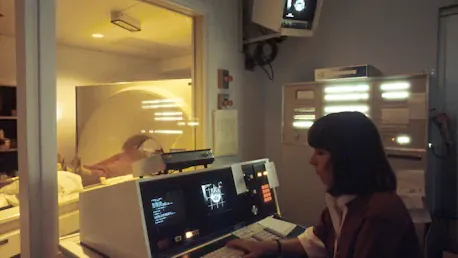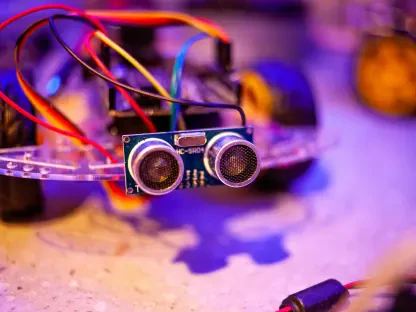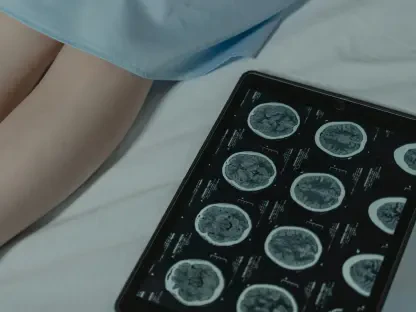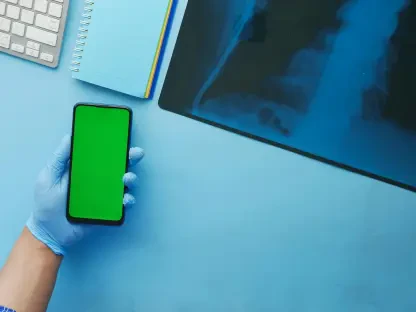How can artificial intelligence redefine the future of radiology? Imagine a world where your next ultrasound is performed by an advanced AI system, which guarantees quality medical imaging is accessible to everyone, regardless of location. With imaging demands expected to surge by up to 26.9% by 2030, the supply of radiologists is projected to increase by only 25.7%. This disparity poses a significant challenge to the healthcare system.
The Crisis: Radiologist and Sonographer Shortage
The healthcare sector is currently experiencing a critical shortage of radiologists, impacting the delivery of timely and efficient medical care. As the demand for diagnostic imaging continues to rise, the number of trained specialists required to interpret these images is not keeping pace. This shortage results in longer waiting times for patients, delayed diagnoses, and increased pressure on the existing radiologists, ultimately affecting patient care quality.
Adding to the challenge, the shortage extends to sonographers, who are essential in conducting ultrasound exams. This deficit has far-reaching implications, leading to increased workloads and potential burnout for the current workforce. The increasing reliance on medical imaging underscores the urgency to find innovative solutions to bridge this gap.
The Promise of Physical AI in Medical Imaging
Enter physical AI—an emerging field that integrates artificial intelligence with robotics, offering a promising solution to the radiologist shortage. Physical AI-driven medical imaging systems can autonomously perform tasks traditionally requiring specialized personnel. These systems are designed to handle complex imaging tasks, ensuring reliable and consistent results, even in regions lacking qualified professionals.
One particularly transformative development is the introduction of autonomous ultrasound systems. These AI-powered machines are capable of scanning, diagnosing, and even performing quality control, bringing advanced diagnostics to underserved areas. By leveraging physical AI, healthcare providers could significantly improve access to medical imaging, reducing the burden on human radiologists.
Success Stories and Case Studies
Prominent partnerships, like the one between NVIDIA and GE HealthCare, exemplify the potential of physical AI in healthcare. Together, they aim to augment radiology workflows through cutting-edge technology. Several hospitals and clinics have already experienced success in integrating these AI-driven systems, leading to more efficient imaging processes and enhanced diagnostic accuracy.
Real-world applications highlight the impact of AI in medical imaging. For instance, some hospitals now utilize intelligent triage systems to prioritize critical cases, ensuring that patients with urgent conditions receive prompt attention. Automated quality control checks performed by AI help maintain high standards in imaging, reducing the likelihood of errors and improving overall patient outcomes.
Expert Insights and Research
Industry leaders, such as Kimberly Powell from NVIDIA, emphasize the transformative potential of AI in radiology. Powell envisions a future where AI simplifies complex workflows, enabling radiologists to focus on more critical tasks. Research supports this optimistic outlook, with studies demonstrating AI’s effectiveness in enhancing diagnostic precision and reducing workload burdens.
However, experts also caution against potential challenges and ethical considerations associated with deploying AI in diagnostics. Ensuring data privacy, maintaining high ethical standards, and addressing the potential for technology bias are crucial factors that need careful consideration as AI adoption in medical imaging progresses.
Practical Steps for Implementing Physical AI in Radiology
Healthcare providers looking to integrate physical AI into their workflows can follow a clear framework to ensure successful implementation. Key strategies include establishing AI training data centers, investing in real-time AI computing infrastructure, and utilizing virtual platforms like Omniverse for simulation and testing.
Step-by-step guidance for adopting AI-driven solutions involves conducting initial pilot projects, training staff to work alongside AI systems, and gradually scaling up operations based on initial feedback and performance metrics. By following these practical steps, healthcare institutions can effectively incorporate AI technologies into their radiology departments, reaping the benefits of enhanced efficiency and improved patient care.
In conclusion, the collaboration between NVIDIA and GE HealthCare marked a pivotal step toward integrating AI and robotics into radiology. This strategic initiative addressed the looming shortage of radiologists and sonographers by introducing AI-enhanced medical imaging. The promise of autonomous imaging devices was seen as a beacon of hope, particularly for underserved regions, ensuring timely and accurate diagnoses. Looking ahead, the ongoing commitment to innovation and ethical considerations would determine the broader adoption of physical AI in healthcare, shaping the future of medical imaging.









